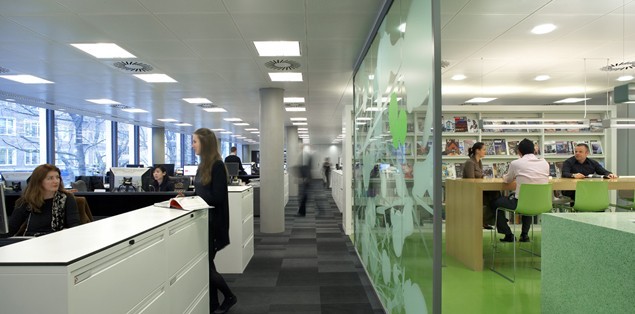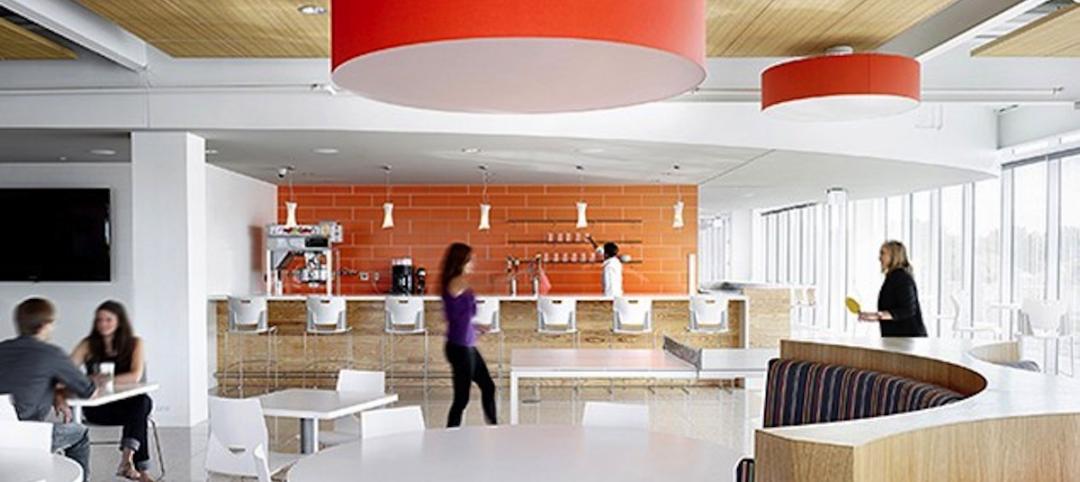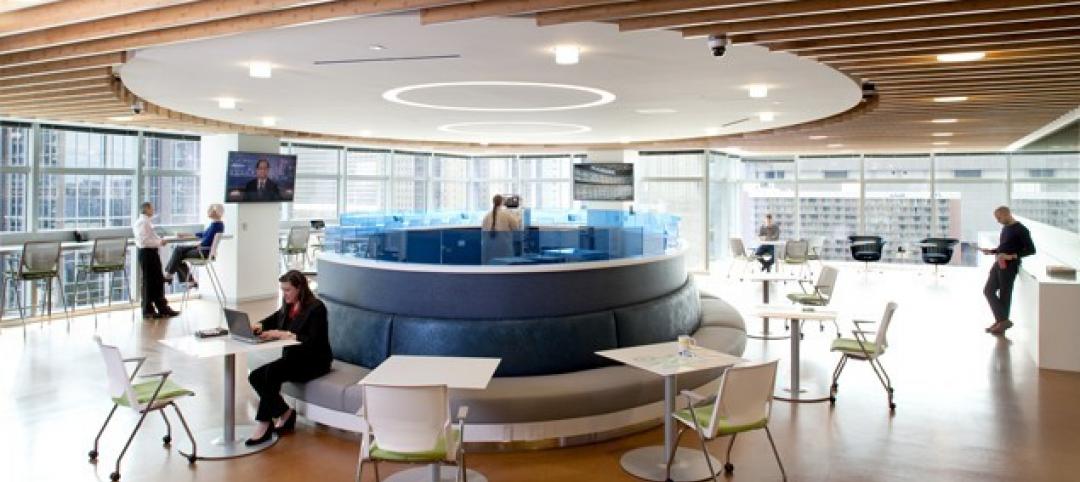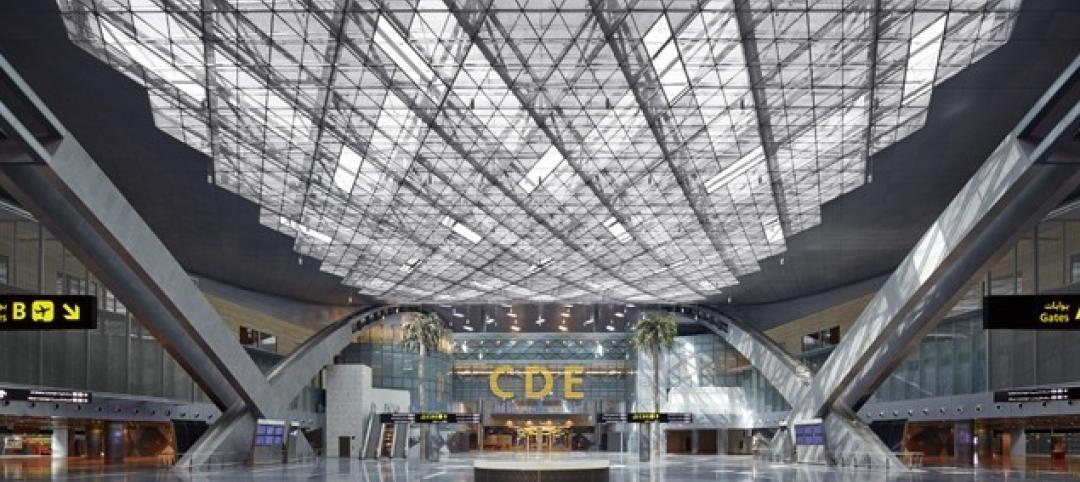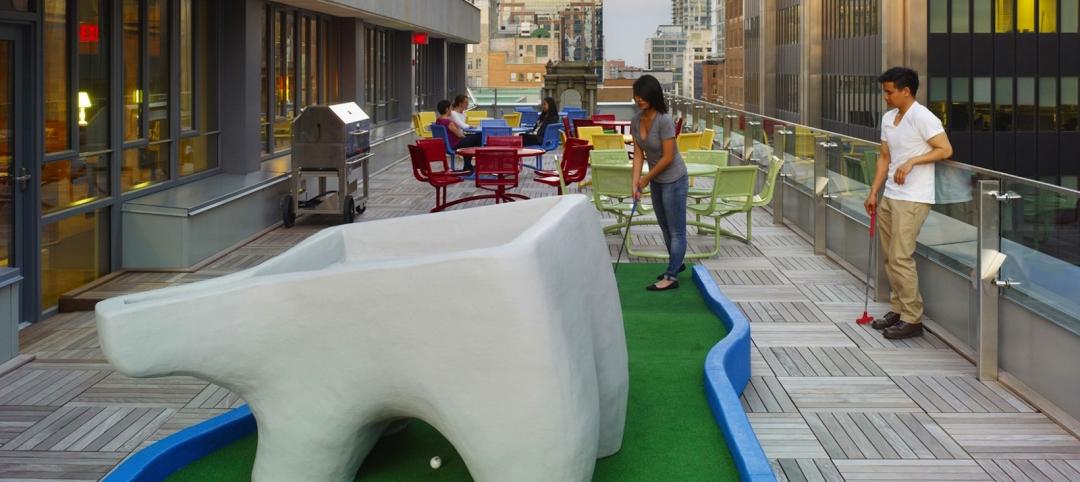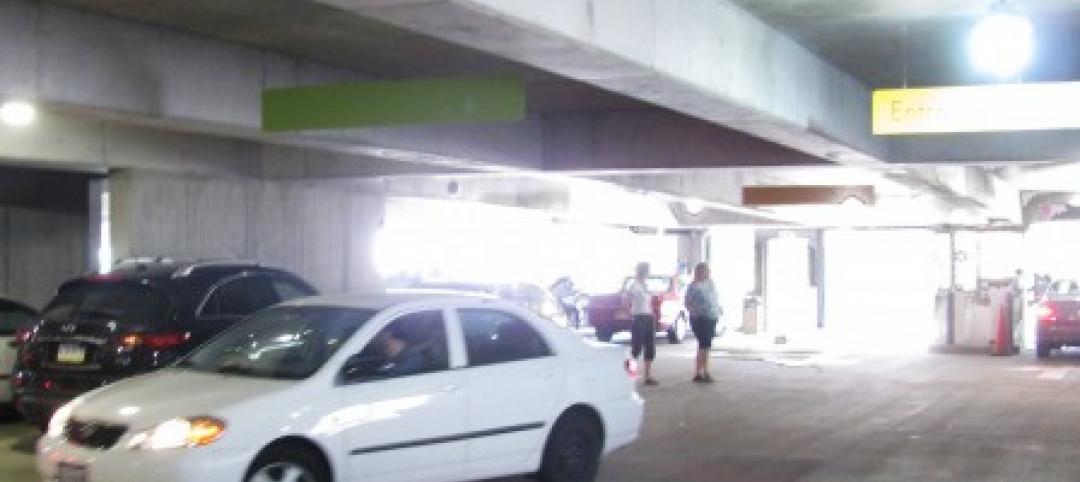As part of our ongoing studies of how building design influences human behavior in today’s social media-driven world, HOK’s workplace strategists had an idea: Leverage the power of social media to collect data about how people feel about their workplaces and the type of spaces they need to succeed.
In what we called the “World’s Largest Workplace Survey,” we set out to capture the widest possible swath of honest opinions about how people feel about their work environments.
Rather than approaching people through traditional phone or web-based surveys, HOK used Facebook to make direct connections in an informal, confidential way. We chose this tool because there are 800 million people on Facebook – more than any other social media site – and because we can easily customize Facebook pages to become effective survey sites.
We launched our Facebook workplace survey in October 2011. So far, we have collected more than 3,600 responses, mostly from within the US. By sharing and “liking” our survey Facebook page, HOK’s people created a viral approach that helped achieve such a high response. To incorporate more insight on strategies for corporate real estate and workplace design, we also asked CoreNet members involved in the organization’s CRE 2020 effort to participate in the survey.
Our survey measures demographic data such as age, nationality, industry and location against information about how employees feel about and function within their workspaces. Survey questions address issues including commute times, number of hours working at home, access to natural light and illness on the job.
After we launched a beta version of the survey, Cresa generously volunteered to sponsor the development and survey rollout.
Here are highlights of what we learned:
How Much Time Do You Spend Commuting?
Half of the survey respondents (of those that work outside of the home) commute less than 30 minutes each day, while a quarter of them report a daily commute time of an hour or more. Six percent of respondents commute more than two hours each day.
We ask this question to determine the amount of unproductive time people spend in cars each day. Companies investigating work-at-home strategies use this data to make the argument for time “given back” to the company. The rule of thumb is that for every hour employees do not spend commuting, they will give back 30 minutes of work time – half the time they don’t need to spend on the road – to their employers.
Capturing all those hours employees spend traveling to and from the workplace not only saves employees time – a perceived benefit – but also decreases an organization’s carbon footprint, which is being calculated by many companies. For organizations in the service industry, the potential to reduce carbon emissions by cutting down on employee commutes is significant.
Where Do You Work?
On average, respondents sitting in offices reported working at their desks 64 percent of the time, at home 20 percent of the time and somewhere else – traveling, for example – 16 percent of the time.
We know from on-site observations of more than 10 million square feet of office space over the past five years that this is not quite true. HOK’s workplace consultants have learned that people perceive that they spend more time at the office than they actually do. In nearly every office space we have observed, even at peak occupancy times – say 10 a.m. on a Wednesday – office workers are usually at their desks no more than half the time.
How Much Could You Work From Home?
With the proper tools and management support, 40 percent of respondents working in offices believe they could work at home 60 percent of the time, or the equivalent of at least three days a week. For many organizations, this is the tipping point for moving from a workplace with assigned workspaces to one with shared or non-allocated spaces. When people work away from the office more than half the time, it’s easier to create a strong business case for modifying occupancy rules and providing fewer seats than people.
The distribution of how often people believe they could work from home is evenly spread across all respondents. This means we can’t draw broad conclusions about how effectively people can work from home without understanding their industry, function, tenure and other factors. Yet we can make a few generalizations.
First, respondents working for larger companies are more likely to say they could work from home than their counterparts in smaller organizations. This is probably because larger companies are more likely to have official work-at-home programs.
Second, employees in some industries clearly believe they can work at home more than others. Industries with the most work-at-home candidates included legal, management consulting, products manufacturing, research, accounting, publishing, government, trade and financial/investment services.
HOK clients that have adopted work-at-home policies and reduced their real estate portfolios include the industries listed above, as well as the pharmaceutical, telecommunications, banking, technology, insurance and advertising industries. Based on our survey results, it’s fair to say there are opportunities for organizations across every sector to adopt work-at-home policies to gain significant real estate savings.

Are You Productive at Work?
We asked office workers questions about the size and configuration of their offices.
Natural light has consistently been proven to improve the productivity and well-being of office workers. Experiencing sunlight and the change of light intensity through the day feeds our circadian rhythms, synching our inner clocks to the earth’s rotation. Compared to those sitting in offices or workstations with low or no panels, people housed in workstations with high panels are the least likely to have access to natural light. Interestingly, respondents in offices with access to daylight are more likely to perceive their space as productive.
Some believe that workstations with high panels are desirable because, although they don’t provide as much light, they reduce noise. This has been proven to be untrue. In fact, the General Services Administration recently studied 10,000 workers and determined that those sitting in high-paneled workstations complained more about noise than those sitting in low-paneled workstations.
No matter the size of the panels, respondents sitting in workstations with panels generally perceive their space to be less productive than those sitting in enclosed offices. We find this to be true in our workplace planning and design work for all types of organizations. Employees in enclosed offices instead of open plan have more ability to control their environment through personal controls that enable them to close a door, adjust their lighting or, occasionally, open their windows. Having personal control of the environment directly correlates to job satisfaction and how productive workers feel.
According to the Facebook survey, the biggest perceived inhibitors to productivity in the office are that the workspace is too loud and that it lacks privacy. These are followed by complaints about air circulation, insufficient technology and tools, and lack of natural light. Objections about noise and privacy are stronger for those sitting in open offices, while people in enclosed offices complain more about poor air circulation.
What Ails You?
An overwhelming 82 percent of our Facebook survey respondents report experiencing some type of physical ailment at work. The most common complaints – neck, back and shoulder pain – are particularly common for workers sitting for long periods during the day. About half of those responding complain of pain in the neck, back or shoulders, while a third report headaches and eye strain. Workers who stand for long periods of time complain of hip, leg and foot pain.
The survey comments indicate that most of the complaints result from poor ergonomics or from being overly sedentary. According to MedicalBillingandCoding.org, sitting six or more hours a day increases the likelihood people will die within 15 years by 40 percent compared to people who sit for less than three hours a day. While this statement seems extreme, it’s clear that sitting or standing for long periods at home or at the office is a genuine health problem.
Our survey respondents may be onto something. In response to these chronic complaints, workplace designers are starting to focus on health and wellness in response by creating health and wellness programs. They are also providing adjustable chairs, sit-to-stand work surfaces, controllable artificial and natural lighting, thermal controls and spaces that support physical movement, such as stairs, outdoor running trails and yoga facilities.
What Do We Recommend?
There are downsides to every type of workspace. Workstations with high panels clearly are not liked by most employees. At the same time, enclosed offices and workstations with low panels don’t always work very well. Open spaces are loud and do not provide desired privacy. While enclosed spaces are generally rated better, they can distance employees from their team members – an issue already prevalent with employees working away from the office.
Establishing a flexible, more dynamic workplace can solve many of these issues by:
• Encouraging movement of people through the workplace and providing access to natural light.
• Allowing employees to “control” their workplace experience through good ergonomics and flexible seating.
• Supporting people and their performance, with attention to physical and mental health and wellness.
• Allowing employees to work at home (or anywhere) by giving them tools to be mobile and effective where they are most productive.
Working away from the office – whether part- or full-time – is here to stay. Employees want it and employers can benefit from it financially, especially in the current economic climate. The challenge is for companies to put in place office environments that support their culture and foster the “glue” that connects employees while supporting flexible, dynamic work solutions.
About the Author
Leigh Stringer, LEED AP, is a senior principal and director of innovation and research in HOK’s Washington, DC, office.
Leigh is responsible for shaping HOK’s innovation, research and benchmarking efforts related to workplace, change management, master planning, technology and on-site services. She is the author of the book, The Green Workplace: Sustainable Strategies that Benefit Employees, the Environment and the Bottom Line, and is the founder of TheGreenWorkplace.com, a blog covering workplace issues, green design and upcoming green policy changes, and co-founder of HOKLife.com.
Read more from the Life at HOK blog.
More from Author
Life at HOK | Apr 21, 2015
How to create an 'emotionally intelligent' workplace
Emotional intelligence is the leading predictor of performance in the workplace and the strongest driver of leadership and personal excellence.
Life at HOK | Feb 6, 2015
6 factors steering workplace design at financial services firms
Grossly underutilized space and a lack of a mobility strategy are among the trends identified by HOK based on its research of 11 top-tier financial services firms.
Life at HOK | Jan 6, 2015
Airports apply technology to maximize hospitality
Technology is transforming the guest experience and enabling designers to reimagine a new hospitality-oriented destination airport terminal.
Life at HOK | Dec 28, 2014
The future of airport terminal design: destination status, five-star amenities, stress-free travel
Taking a cue from the hospitality industry, airport executives are seeking to make their facilities feel more like destinations, writes HOK's Richard Gammon.
Life at HOK | Nov 17, 2014
Hospitality at the workplace: 5 ways hotels are transforming the office
During the past five years, the worlds of hospitality and corporate real estate have undergone an incredible transformation. The traditional approach toward real estate asset management has shifted to a focus on offerings that accommodate mobility, changing demographics, and technology, writes HOK's Eva Garza.
Life at HOK | Oct 13, 2014
The mindful workplace: How employees can manage stress at the office
I have spent the last several months writing about healthy workplaces. My research lately has focused on stress—how we get stressed and ways to manage it through meditation and other mindful practices, writes HOK's Leigh Stringer.
Life at HOK | Aug 16, 2014
The science of learning: Designing the STEM learning facilities of the future
New technology and changing pedagogies are influencing how to best teach a generation of learners who have never known a world without smartphones or tablets, writes HOK's Kimberly Robidoux.
Life at HOK | Aug 5, 2014
Will driverless cars kill the parking structure?
A report from Deloitte highlighted how driverless cars could dramatically alter car ownership in the future, pushing the pendulum from ownership to rentals and ride sharing.
Life at HOK | May 19, 2014
What can architects learn from nature’s 3.8 billion years of experience?
In a new report, HOK and Biomimicry 3.8 partnered to study how lessons from the temperate broadleaf forest biome, which houses many of the world’s largest population centers, can inform the design of the built environment.
Life at HOK | Jan 30, 2014
How reverse engineering nature can spur design innovation
It’s not enough to copy nature. Today’s designers need a deeper understanding of environmental nuance, from the biome in.

